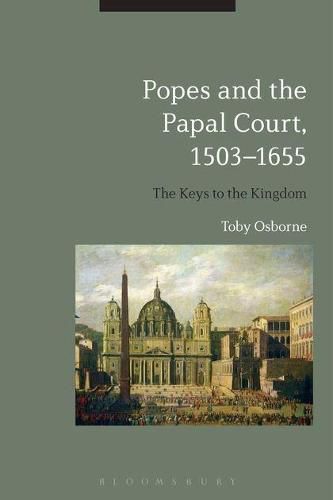Readings Newsletter
Become a Readings Member to make your shopping experience even easier.
Sign in or sign up for free!
You’re not far away from qualifying for FREE standard shipping within Australia
You’ve qualified for FREE standard shipping within Australia
The cart is loading…






Popes and the Papal Court, 1503-1655 is the first book-length account of the early modern papal court in English. As well as bringing together art historical, social, and political studies in several languages, it contains a wealth of primary source material, such as advice manuals for cardinals and aspiring courtiers, accounts of Roman festivals, reports of visiting ambassadors and news reports from Rome deposited in the Vatican library.
The book argues that during the 16th and 17th centuries, popes were conscious to varying degrees of their responsibilities to conserving and enhancing the status of the monarchy as something larger than themselves as individuals or their families, and as such they exhibited some characteristics of dynastic monarchies. Toby Osborne explores how the culture of the papal court and the ways in which it functioned as a point of contact between the ruler, certain elites, and other princes not only had similarities with dynastic states, but also set the standard for court life around Europe.
By bringing to light recent scholarship written by continental historians, Popes and the Papal Court, 1503-1655 represents an important contribution to the scholarly endeavour to better understand the political culture of the papal states and the workings of the papal monarchy. As such, it will be illuminating reading for all students and scholars interested in early modern court history.
$9.00 standard shipping within Australia
FREE standard shipping within Australia for orders over $100.00
Express & International shipping calculated at checkout
Popes and the Papal Court, 1503-1655 is the first book-length account of the early modern papal court in English. As well as bringing together art historical, social, and political studies in several languages, it contains a wealth of primary source material, such as advice manuals for cardinals and aspiring courtiers, accounts of Roman festivals, reports of visiting ambassadors and news reports from Rome deposited in the Vatican library.
The book argues that during the 16th and 17th centuries, popes were conscious to varying degrees of their responsibilities to conserving and enhancing the status of the monarchy as something larger than themselves as individuals or their families, and as such they exhibited some characteristics of dynastic monarchies. Toby Osborne explores how the culture of the papal court and the ways in which it functioned as a point of contact between the ruler, certain elites, and other princes not only had similarities with dynastic states, but also set the standard for court life around Europe.
By bringing to light recent scholarship written by continental historians, Popes and the Papal Court, 1503-1655 represents an important contribution to the scholarly endeavour to better understand the political culture of the papal states and the workings of the papal monarchy. As such, it will be illuminating reading for all students and scholars interested in early modern court history.